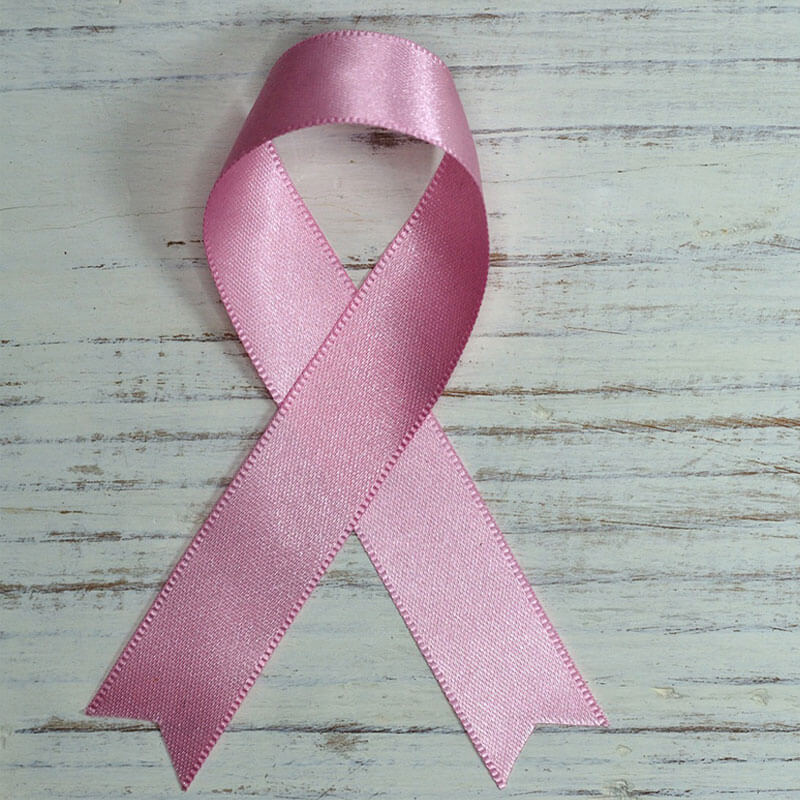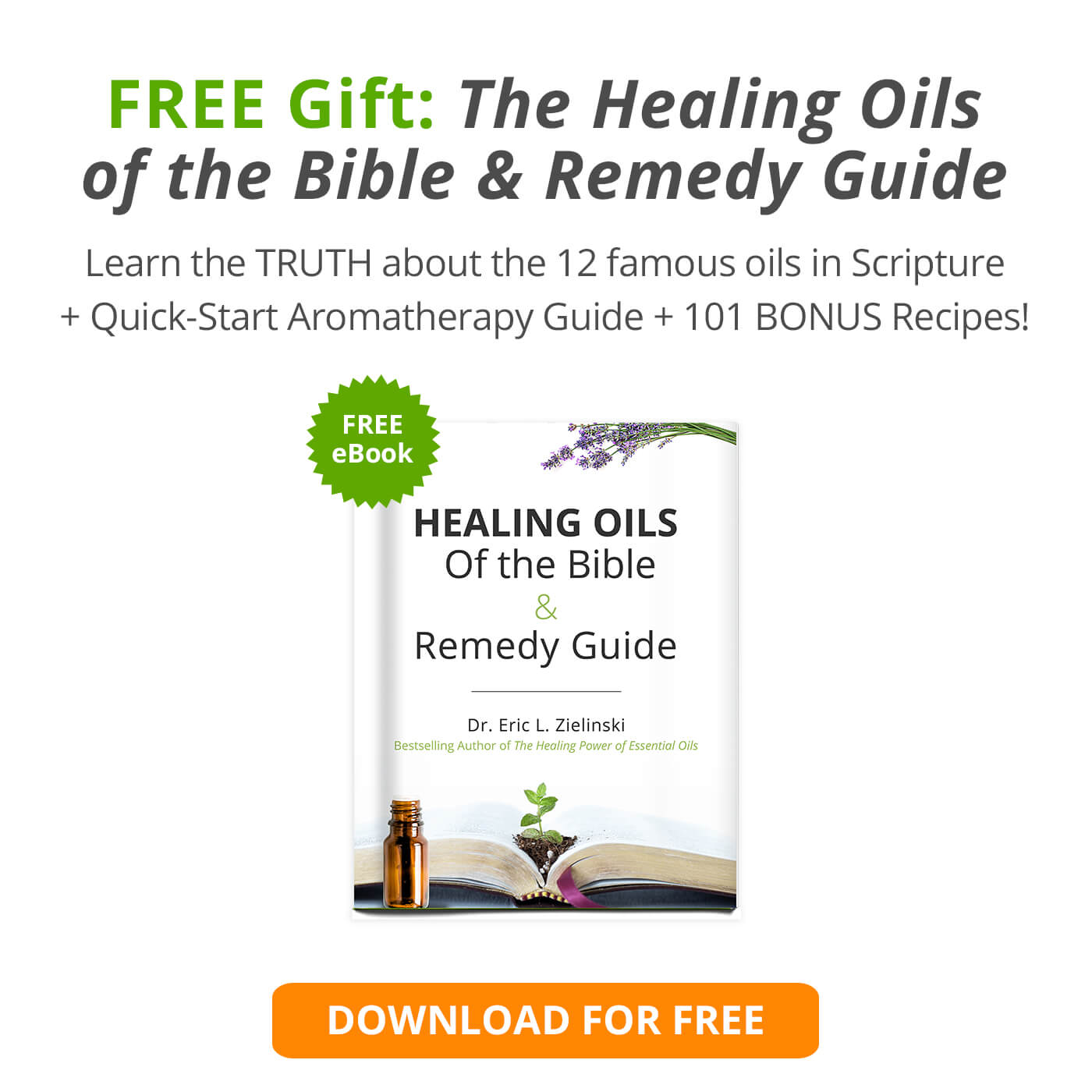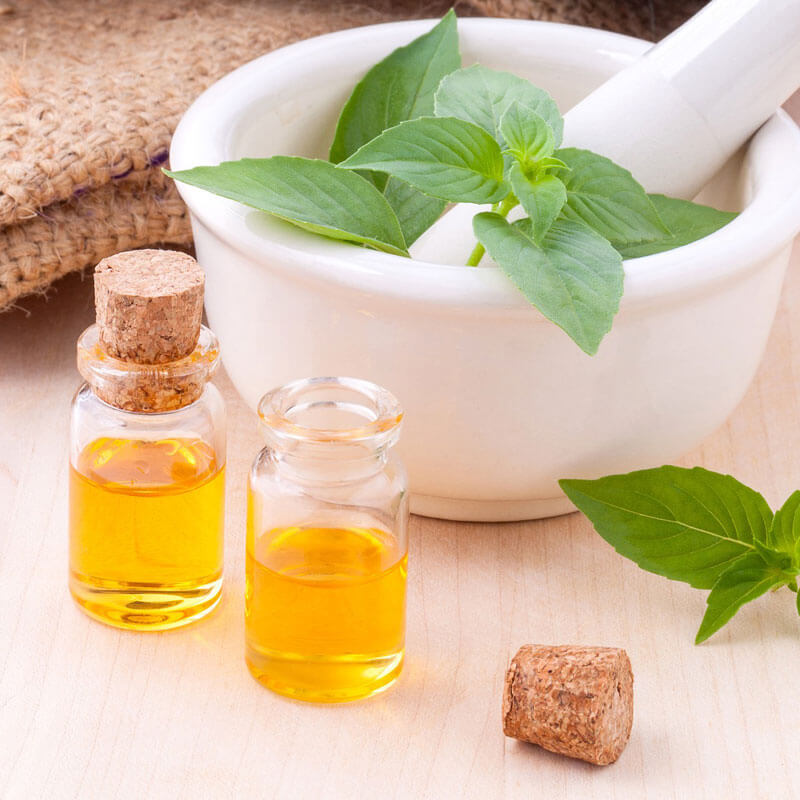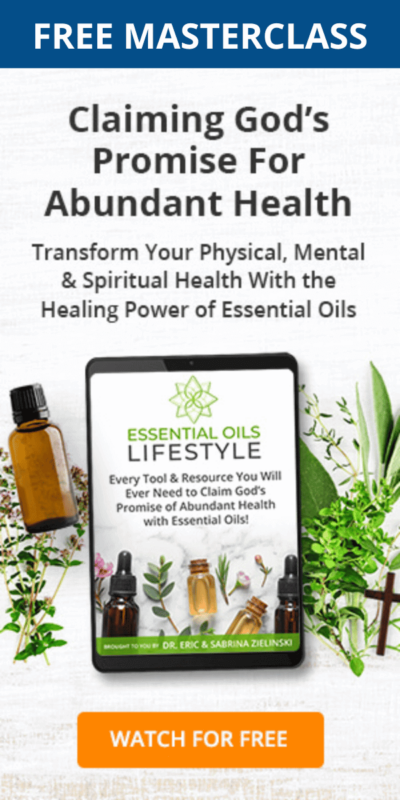Of all the popular natural solutions out there, essential oils for cancer has gained significant fanfare and has become extremely controversial because of the claims that many people share online. This article unpacks fact from fiction and attempts to bring some balance to the equation.
Table of Contents
Three Important Considerations
The truth about essential oils for cancer is three-fold.
First – there are no placebo, randomized-controlled studies that evaluate essential oils on humans, however, in vitro and animal studies suggest that essential oils can help prevent and treat cancer at the cellular level. In terms of human studies, essential oils have only been shown to be effective at managing the side effects related to cancer itself, and the side effects people suffer at the hands of medical interventions. Thus, all reference to using essential oils for cancer treatment and prevention is highly experimental.
Second – it is critical to recognize that this is not an all-or-nothing approach. Just because you’re taking chemo doesn’t mean that you can’t use essential oils for cancer. The same is true on the flip side of that coin. Far too many patients and healthcare practitioners dichotomize natural from allopathic therapies, and do not give enough emphasis on the practicality of using both together. This field of study is called “integrative oncology,” and is growing rapidly.
Third – with this said, there are literally thousands upon thousands of testimonials of people on the Internet claiming that essential oils for cancer cured them. And this cannot be disputed because a vast majority of them are your normal, not-trying-to-make-a-buck kind of people who are not trying to sell a product. These are the so-called medical “miracles,” which we hope to be the ultimately basis for further research.
Best Essential Oils for Cancer
Of all of the studies in the medical literature, this is just a sample of those that suggest essential oils for cancer therapy can benefit patients.
1. Citrus Oils
The most prominent and noteworthy component of most citrus oils is d-limonene, confirmed to be a potent cancer-fighting agent. In the words of the U.S. National Library of Medicine’s open chemisry database, PubChem,
“D-Limonene is an oral dietary supplement containing a natural cyclic monoterpene and major component of the oil extracted from citrus peels with potential chemopreventive and antitumor activities. Although the mechanism of action has yet to be fully elucidated, limonene and its metabolites perillic acid, dihydroperillic acid, uroterpenol and limonene 1,2-diol may inhibit tumor growth through inhibition of p21-dependent signaling and may induce apoptosis via the induction of the transforming growth factor beta-signaling pathway. In addition, they inhibit post-translational modification of signal transduction proteins, resulting in G1 cell cycle arrest as well as differential expression of cell cycle- and apoptosis-related genes.”
2. Clary Sage
Sclareol, a constituent of clary sage essential oil, has promising anti-cancer effects in laboratory evaluations. During studies dating back to 1999 to just last year, it has been shown to impact the way that cancer cells proliferate by literally killing through a process known as apoptosis. (1, 2)
Apoptosis is interesting because it literally triggers the cell to commit “suicide,” more formally known as programmed cell death, which suggests that clary sage oil could have profound effects on the prevention and treatment of cancer lines.
Sclareol, has shown some promising things in lab tests. Over the last couple of decades but as recently as this year (2015), studies have emerged that analyze sclareol’s effect on cancer cells. With the caveat that these benefits occurred within the confines of lab cultures and dose adjustments, sclareol may have an impact on the way that cancer cells proliferate, and they could help to induce apoptosis (cancer cell death).
While this does not tell us how much potential sclareol has to directly treat cancer – and it’s exciting to think about where that could go one day! – it is a common thread that we see in many antioxidant-rich essential oils. This is especially interesting for clary sage, because some claim that it is “estrogenic” due to the sclareol content and should be avoided by estrogen-dominent cancer patients.
This is an incorrect assumption, according to essential oil safety expert Robert Tisserand puts it this way:
“Sclareol does have an interesting anticancer activity, including in vitro action against human breast cancer MCF-7 cells (Dimas et al 2006). An isomer, 13-epi-sclareol, which is also present in clary sage oil, inhibits the growth of breast and uterine cancers in vitro, and was slightly more potent than Tamoxifen, but was not toxic to normal cells (Sashidhara et al 2007). This suggests the possibility that sclareol might actually inhibit estrogen, and might after all have some capacity to interact with estrogen receptor sites. What we do know is that sclareol will not give you breast cancer.” (3)
3. Frankincense
Of all the cancer-fighting essential oils, frankincense (Boswellia sacra, B. carterii, B. frereana, and B. serrata) is the most controversial. The research out there has been scrutinized because of its industry-bias, and some claim that there are no chemical compounds in frankincense oil that can kill cancer. With that said, just do a search on the Internet and healing stories abound. It is hard to dispute with the thousands of people who state their cancer was cured after using frankincense.
The biggest issue some chemists and Aromatherapists have is regarding boswellic acids (BAs), which have been proven to be “cytotoxic to ovarian cancer cells at pharmacologically achievable concentrations” and “may form the basis of a novel anticancer treatment for ovarian cancer, perhaps alongside conventional chemotherapy.” (4) A known compound in frankincense resin, the issue is that boswellic acids are too large and heavy to be included in the volatile (evaporated) components that make up essential oils.
In other words, BA’s are not in the essential oils. Nonetheless, in vitro studies continue to emerge demonstrating the anti-cancer effects of frankincense essential oil on bladder (5), breast (6) and skin (7) cancers.
Other frankincense studies have evaluated cerebral edema (swelling in the head) after their tumors have been surgically removed or at the hands of radiation therapy, with great success. Frankincense extract, which contains some essential oil, can possibly help this particular problem. A clinical trial published in 2011 evaluated 44 patients with cerebral edema and, after taking 4200 mg/day of a Boswellia serrata (BS) extract was administered, the swelling was reduced by 75% or more in 60% of the participants. The researchers conclude that, “BS could potentially be steroid-sparing for patients receiving brain irradiation. (8)
Frankincense is also known to help manage depression, pain and boost the immune system. (9, 10)

4. Lavender
A popular theme in the natural health discussion is that antioxidants are the super healers that we all need. Free radicals created by chemicals, pollutants, stress and toxins are the culprits for a cascade of cellular damage, immune inhibition, and limitless unforeseen health risks – including cancer and chronic illness.
Suffice it to say that, if free radicals are the super villains, antioxidants are the super heroes.
The body itself creates antioxidants in the form of the enzymes catalase (CAT), glutathione peroxidase (GSH-Px), and superoxide dismutase (SOD) among others. Unfortunately, our bodies are exposed to a constant onslaught of free radicals that drain our naturally occurring antioxidants and we are forced to supplement.
Believe it not, lavender essential oil joins the ranks as an effective natural antioxidant support.
Of the major antioxidant enzyme mentioned above, Chinese researchers observed that lavender essential oil can upregulate levels of all three in mice within the first day of treatment and protect brain cells again stroke and injury! (11) Romanian researchers noted similar activity by simply inhaling lavender for an hour each day. According to the study, “Taken together, our results suggest that antioxidant and antiapoptotic activities [of healthy brain cells] of the lavender essential oils are the major mechanisms for their potent neuroprotective effects against scopolamine-induced oxidative stress in the rat brain,” that can lead to cancer and other illnesses. (12)
5. Lemongrass
Several studies have evaluated the potential cancer-fighting properties of lemongrass essential oil. (13)
In 2009, an article was published that evaluated the essential oil of Cymbopogon flexuosus (a variety of lemongrass) for its in vitro cytotoxicity ability against 12 human cancer cell lines; as well as its anticancer effects on mice in vivo. The results were remarkable. Researchers discovered that the essential oil triggers a variety of mechanisms that kill cancer cells. “Our results indicate that the oil has a promising anticancer activity and causes loss in tumor cell viability by activating the apoptotic process as identified by electron microscopy.” (14)
6. Myrrh
The role that myrrh essential oil plays in natural cancer therapies is a becoming a popular topic in the scientific community. Particularly, with how it interacts with frankincense essential oils. In 2013, one of the most thorough studies on the topic was published in the journal Oncology Letters, and this is what researcher discovered:
“The effects of the two essential oils, independently and as a mixture, on five tumor cell lines, MCF-7, HS-1, HepG2, HeLa and A549, were investigated using the MTT assay. The results indicated that the MCF-7 and HS-1 cell lines showed increased sensitivity to the myrrh and frankincense essential oils compared with the remaining cell lines. In addition, the anticancer effects of myrrh were markedly increased compared with those of frankincense, however, no significant synergistic effects were identified.” (15)
Don’t think that researchers are evaluating frankincense and myrrh together as complementary therapies because of the Christmas story. Oh, no. The resins from frankincense and myrrh trees have been traditionally prescribed simultaneously in Chinese medicine for years. Used primarily to treat inflammatory diseases, blood stagnation, frankincense and myrrh therapy is exceptionally effective to relieve swelling and pain. Even though researchers have not observed a synergistic effect regarding cancer, “A previous study identified that the combination of frankincense and myrrh oils exhibited synergistic effects on harmful bacterial infections Cryptococcus neoformans and Pseudomonas aeruginosa.” (14, 16)
7. Peppermint & Spearmint
In 2014, the journal BioMed Research International published an article uncovering that peppermint and spearmint is highly effective at managing common side effects people that suffer at the hands of medical cancer therapies; especially vomiting and nausea. Taken directly from the study we find that these oils, as well as some others, can help with a variety of conditions cancer patients suffer from:
- “Cancer patients suffer from different side effects which can be preferentially reduced by alternative methods. EOs are used in the aromatherapy for reducing the agony of brain cancer patients (17). EO is efficient in depression and reduction of anxiety in cancer patients (18). Cancer patients undergoing chemotherapy, one of the most frequently used treatment method in cancer, are prone to various side effects (19). These are nausea and vomiting.
- Mentha spicata [spearmint] and M. piperita [peppermint] have been found to be effective in overcoming these emetic conditions (chemotherapy-induced nausea and vomiting, CINV) along with the reduction of expenditure on treatment in the cancer patients undergoing chemotherapy (20).
- EOs of Leptospermum scoparium [Manuka myrtle] and Kunzea ericoides [Karo Greenfingers] were reported to prevent mucositis in the head and neck cancer patients undergoing radiotherapy when used in the preparation of mouthwash (21).
- Some cancer patients having metastatic tumorigenic ulcers of skin develop necrosis and malodour (22). Patients suffering from such malodour were reported to have improvement in their state on treatment of these ulcers with the mixture of EOs having eucalyptus, melaleuca, lemongrass, lemon, clove leaf, and thyme on a 40% ethanol base (23).
- Lavender EO is widely used in aromatherapy and is found to be beneficial in reducing the distress in cancer patients (24). Hence, EOs serve as the valuable preparations in amelioration of the side effects and sufferings of the cancer patients.”
8. Thyme
The journal Molecules published a study in 2010 that evaluated how cancer cells were evaluated could stand up against ten powerful essential oils. Included was thyme and it stood out from the crowd as the most beneficial against prostate, lung carcinoma, and breast cancers. (25)
As one of the primary herbs to facilitate estrogen binding, thyme oil can help balance and regulate hormones. (26) Like we noted above with clary sage, thyme is not the only potential estrogenic essential oil noted for its anticancer potential. It should be interesting to note that, because cancer frequently holds receptors for estrogen and can theoretically be “fed” by any compound that is estrogenic, people at risk of developing certain cancer lines are oftentimes advised to avoid estrogen.
With the potent anticancer properties that we have seen in just the few studies noted above, it is more than likely that we will soon discover that the so-called “cancer-causing” plants and foods people are avoiding actually hold the key that our bodies need to unlock potent cancer-fighting potential.
Common Side Effects of Cancer Treatments
It’s common knowledge that cancer treatments cause a slew of side effects – problems that people suffer when medical treatment damage healthy tissues or organs.
The National Cancer Institute recommends that you, “Ask your health care team what side effects you are likely to have” and to get information about ways to prevent or manage specific cancer-related side effects is included in the list below.” (27)
Unfortunately, the frustration that patients encounter is that many doctors are not well-versed in symptom-based care that is safe and side effect free. Meaning, that your doctor is more than likely to recommend pharmaceuticals or other medical interventions that will end up causing more complications.
Case in point: our good friend recently developed colitis because of the immunotherapy she was taking annihilated her gut flora. According to the National Cancer Institute, other common complications to cancer treatments include: (27)
- Anemia
- Appetite Loss
- Bleeding and Bruising (Thrombocytopenia)
- Constipation
- Delirium
- Diarrhea
- Edema
- Fatigue
- Fertility Issues in Boys and Men
- Fertility Issues in Girls and Women
- Hair Loss (Alopecia)
- Infection and Neutropenia
- Lymphedema
- Memory or Concentration Problems
- Mouth and Throat Problems
- Nausea and Vomiting
- Nerve Problems (Peripheral Neuropathy)
- Pain
- Sexual Health Issues in Men
- Sexual Health Issues in Women
- Skin and Nail Changes
- Sleep Problems
- Urinary and Bladder Problems
So, what’s a person to do?
Using Essential Oils with Conventional Medicine
It’s important to realize that natural therapies can and, in many situation, should be used in conjunction with conventional medicine (unless obvious contraindications are present and your oncologist recommends against it). It’s not an all-or-nothing thing. Meaning, people oftentimes feel that they only have two options:
- Either go the “all-natural” route
- Or follow the allopathic model.
But this is NOT the case.
Many don’t realize that a balanced-approach works well too, and may even be more effective than one or the other. In the words of a 2014 article in the journal BioMed Research International, (28)
“EOs have also been reported to improve the quality of life of the cancer patients by lowering the level of their agony (29). EOs-mediated therapy cannot be a substitute to the standard chemotherapy and radiotherapy but can be used in combination with cancer therapy to decrease the side effects of the drugs. Hence, EOs can be used for improving the health of the cancer patients and as a source of novel anticancer compounds….Use of the EOs as dietary supplements and coadministration with drugs can enhance the response to the treatment.”
This last sentence is important. It would be wise to work with an oncologist who is open-minded to alternative therapies, and find the right protocol for you.
Practical Suggestions & Uses
Never use essential oils undiluted and always work with your oncologist before ingesting them due to potential drug interactions.
When diffusing, follow the instructions on your diffuser. Generally, 4-5 drops (in total) are recommended.
When applying topically, be sure to dilute with a carrier oil using these conversions:
- 1% dilution: 6 drops of EO per oz of carrier oil
- 2% dilution: 12 drops of EO per oz of carrier oil
- 3% dilution: 18 drops of EO per oz of carrier oil
- 5% dilution: 30 drops of EO per oz of carrier
If working with tablespoons are more comfortable for you, 1 oz. = 2 tablespoons.
- 1% dilution: 3 drops of EO per tablespoon of carrier oil
- 2% dilution: 6 drops of EO per tablespoon of carrier oil
- 3% dilution: 9 drops of EO per tablespoon of carrier oil
- 3% dilution: 9 drops of EO per tablespoon of carrier oil
- 5% dilution: 15 drops of EO per tablespoon of carrier
To make an Immunity / Cellular Rejuvenation Blend, start off with mixing equal parts of 2-3 of the oils below unless otherwise noted. There is no “magic formula.” You’ll need to find something that works for you.
- Basil*
- Black Pepper
- Cardamom
- Cinnamon*
- Clary Sage
- Clove*
- Fennel*
- Frankincense
- Helichrysum
- Lemongrass*
- Melissa*
- Myrrh
- Orange
- Oregano*
- Peppermint
- Rosemary
- Sandalwood
- Tea Tree
- Thyme*
*Use caution with these essential oils to avoid the maximum dermal limits in your dilutions. You’ll want to mix them at a much lower percentage. The dilutions above are a good place to start, and you can consult with Tisserand & Young’s Essential Oil Safety text book.
To make a Joyful Blend, start off with mixing equal parts of 2-3 of the oils below.
- Citrus Oils (bergamot, clementine, grapefruit, lemon, lime, neroli, sweet orange, tangerine, yuzu etc.)
- Frankincense
- Lemon myrtle
- Melissa
- Sandalwood
- Vanilla
- Ylang ylang
To make a Digestion Blend, start off with mixing equal parts of 2-3 of the oils below.
To make a Respiratory Support Blend, start off with mixing equal parts of 2-3 of the oils below.
To make a Muscle Soothing Blend, start off with mixing equal parts of 2-3 of the oils below.
- Balsam/White Fir
- Birch
- Chamomile
- Clary Sage
- Copaiba
- Cypress
- Frankincense
- Helichrysum
- Juniper
- Lemongrass
- Marjoram
- Osmanthus
- Peppermint
- Rosemary
- Yarrow
- Wintergreen
Parting Words
Let’s remember, peer-reviewed articles regarding essential oil and cancer discuss the success clinical researchers have experienced in using various essentials oils to prevent, stop and even reverse the growth of various cancer lines in animal and human cell studies. It is important to keep in mind that a vast majority of these studies are based off of cells in a petri dish. Subsequently, many experts and critics of using essential oils for cancer therapy insist that we cannot extrapolate the data from these studies to live, in vivo cancer patients.
Additional Essential Oils for Cancer References
- Composite Essential Oils and Cancer Studies
- Cinnamon Oil and Cancer Studies
- Clove Oil and Cancer Studies
- Frankincense Oil and Cancer Studies
- Lemongrass Oil and Cancer Studies
- Melissa Oil and Cancer Studies
- Sandalwood Oil and Cancer Studies
- Thyme Oil and Cancer Studies
Essential Oils for Breast Cancer Specific Research
- Black Pepper, Cinnamon, Clove, Oregano and Breast Cancer
- Cardamom and Breast Cancer
- Fennel and Breast Cancer
- Clary Sage and Breast Cancer
- Frankincense and Breast Cancer
- Melaleuca and Breast Cancer
- Helichrysum and Breast Cancer
- Oregano and Breast Cancer (Study 1)
- Oregano and Breast Cancer (Study 2)
- Peppermint and Breast Cancer
- Rosemary and Breast Cancer
- Thyme and Breast Cancer
- http://www.ncbi.nlm.nih.gov/pubmed/10071073
- http://pubget.com/articles/elasticsearch_show/25672419
- http://roberttisserand.com/2010/04/is-clary-sage-oil-estrogenic/
- http://www.researchgate.net/publication/270275886
- http://www.biomedcentral.com/1472-6882/9/6
- http://www.ncbi.nlm.nih.gov/pubmed/22171782
- https://www.researchgate.net/publication/274338503_Management_of_basal_cell_carcinoma_of_the_skin_using_frankincense_Boswellia_sacra_essential_oil_A_case_report
- http://www.ncbi.nlm.nih.gov/pubmed/21287538
- http://www.ncbi.nlm.nih.gov/pubmed/18753801
- http://www.ncbi.nlm.nih.gov/pubmed/12710734
- http://www.ncbi.nlm.nih.gov/pubmed/22895026
- http://www.sciencedirect.com/science/article/pii/s0944711312005120
- http://www.ncbi.nlm.nih.gov/pubmed/?term=lemongrass+essential+oil+cancer
- http://www.ncbi.nlm.nih.gov/pubmed/19121295
- http://www.ncbi.nlm.nih.gov/pmc/articles/PMC3796379/
- http://pubget.com/articles/elasticsearch_show/22288378
- http://www.hindawi.com/journals/bmri/2014/154106/#B199
- http://www.hindawi.com/journals/bmri/2014/154106/#B200
- http://www.hindawi.com/journals/bmri/2014/154106/#B201
- http://www.hindawi.com/journals/bmri/2014/154106/#B202
- http://www.hindawi.com/journals/bmri/2014/154106/#B203
- http://www.hindawi.com/journals/bmri/2014/154106/#B204
- http://www.hindawi.com/journals/bmri/2014/154106/#B205
- http://www.hindawi.com/journals/bmri/2014/154106/#B206
- http://www.ncbi.nlm.nih.gov/m/pubmed/20657472/
- http://www.ncbi.nlm.nih.gov/pubmed/9492350
- https://www.cancer.gov/about-cancer/treatment/side-effects
- http://www.hindawi.com/journals/bmri/2014/154106/
- http://www.hindawi.com/journals/bmri/2014/154106/#B12
- http://www.hindawi.com/journals/ecam/2015/397821/
- http://www.researchgate.net/publication/261762686_Apoptosis-Inducing_Effects_of_Melissa_officinalis_L._Essential_Oil_in_Glioblastoma_Multiforme_Cells







